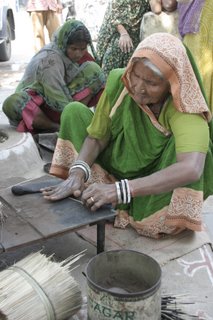Micro-credit at the Post Office
What makes more sense than reaching the poorest sections of the society through the one place easily accessible to them – the post office! The National Bank for Agriculture and

What makes more sense than reaching the poorest sections of the society through the one place easily accessible to them – the post office! The National Bank for Agriculture and Rural Development (NABARD) has  tied up with the largest postal service in the world – India Post – to make microcredit available to female self-help groups (SHGs) in the remotest parts of the country. An SHG is described by Professor Annuppalle of Sri Venkateswara University as “small voluntary association of poor people, preferably from the same socio-economic background.”
tied up with the largest postal service in the world – India Post – to make microcredit available to female self-help groups (SHGs) in the remotest parts of the country. An SHG is described by Professor Annuppalle of Sri Venkateswara University as “small voluntary association of poor people, preferably from the same socio-economic background.”
Lori Curtis reports in MicroCapital:
The loans are set up so that NABARD provides the funds and the Post Office disburses the loans to SHGs. The interest rate is nine percent, three percent of which is commission for the Post Office, the rest is returned to NABARD. SHGs must open accounts with their local post office, and once they are identified by NGOs or recommended by NABARD they are watched for six months. A committee made up of representatives from NABARD, relevant NGOs and the Department of Post determine a credit rating and those SHGs with qualifying marks are eligible for these loans. The upper loan limit is Rs 24,000 (USD 515) or four times the deposit the SHG has in their post office.
The project which was initiated in two districts in Tamil Nadu as a pilot project in 2006 has now been extended to include the Northeast and 8 more states. A total of Rs.1.35 million has been disbursed to 165 SHGs in Tamil Nadu.
The National Bank for Agriculture and Rural Development (NABARD) was founded in 1982 as part of a government mandate to facilitate credit flow for promotion and development of agriculture, small-scale industries and rural crafts. As of March 2006, 33 million individuals have been linked to microcredit through this program.
With 155,333 post offices in India, of which 139,074 are in rural areas, there is great potential for this scheme to change the lives of millions living below the poverty line, and provide them a means of sustained livelihood.
Read the complete article here.
Link Credit: Asha P. Thanks for contributing!
Image Courtesy: http://sophieandstan.blogspot.com/
This story made me
-
97
-
121
-
89
-
167











